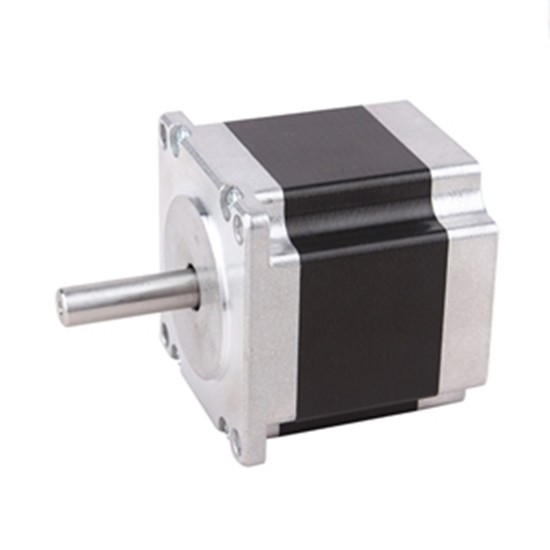
Nema 23 2-phase Stepper Motor, 2A, 1.8 Degree, 6 Wires
from
$65.46
Ex Tax: $65.46
- Stock: In Stock
- Model: RDDLZ-STEP-762302
- Weight: 1.00
- SKU: RDDLZ-STEP-762302
Available Options
Create unlimited custom product blocks and display them in accordions or tabs or open blocks. Each block can be assigned to all products at once or specific products according to advanced criteria.
Create unlimited custom product blocks and display them in accordions or tabs or open blocks. Each block can be assigned to all products at once or specific products according to advanced criteria.
Nema 23 Stepper motor, 1.35Nm in 76mm, 1.8 degree, 2 phase 6 wires, manufacturer direct sale.
Specification
| Electrical Specification | Model | RDDLZ57STH76-2006 |
| Matched Driver Model | RDDLZDSP57(Click it to see more info) | |
| Step Angle | 1.8° | |
| Holding Torque | 1.35Nm | |
| Rated Current/phase | 2A | |
| Phase Resistance | 2.25Ω | |
| Inductance | 3.6mH | |
| Rotor Inertia | 440g-cm2 | |
| Physical Specification | Frame Size | 57 x 57mm |
| Length | 76mm | |
| Shaft Diameter | Φ6.35mm | |
| Shaft Length | 19mm | |
| Motor Leads | 6 | |
| Weight | 1.1kg | |
| Technical Parameters | Step Angle Accuracy | ±5% (full step, no load) |
| Resistance Accuracy | ±10% | |
| Inductance Accuracy | ±20% | |
| Temperature Rise | 80℃ Max. (rated current, 2 phase on) | |
| Ambient Temperature | -20℃~+50℃ | |
| Insulation Resistance | 100MΩ Min. 500VDC | |
| Dielectric Strength | 500V AC for one minute | |
| Shaft Radial Play | 0.02Max. 450g | |
| Shaft Axial Play | 0.08Max. 450g | |
| Quality Assurance | Warranty Period | 12 months |
| Certificate | CE, ROHs, ISO/SGS9001 |
Nema 23 Stepper Motor Dimensions: (Unit=mm)
L Max=76mm
Nema 23 Stepper Motor Wiring Diagram
Tips: Advantages and disadvantages of stepper motor
A. Advantages
- The rotational angle of motor is in direct proportion to number of pulses.
- The torque is the largest when the motor stops rotating (when winding is excited).
- As the precision of each step is 3% to 5% and the error at one step will not be accumulated to the next one, so there is good position accuracy and repeatability of motion.
- Excellent start and stop and inversion response.
- Without electric brush, the reliability is high. Therefore, the service life of motor only depends on that of bearing.
- The response of motor is determined by the digital input pulse, so open-loop control can be adopted. As a result, the structure of the motor can be simple and the cost can be controlled.
- Synchronous rotation at extremely low velocity by only directly connecting the load to the spindle of motor.
- For the velocity is in direct proportion to the pulse frequency, there is wide range of rotational velocity.
B. Disadvantages
- If not controlled properly, the resonance can be easily caused.
- Hard to rotate at high rotational velocity.
- Hard to obtain large torque.
- No advantage over volume and weight and low utilization ratio of energy resources.
Builder in Product TAB
NEW! Since Journal 3.2, the much improved T.A.B (Tabs Accordion Blocks) system supports the page builder inside the tab content. Unlimited Blocks, Tabs or Accordions with any HTML content or the builder interface (supporting custom rows/columns/modules) can be assigned to any individual product or to certain groups of products, like entire categories, brands, products with specific options, attributes, price range, etc.
You can indicate any criteria via the advanced product assignment mechanism and only those products matching your criteria will display the modules.
Also, any module can be selectively activated per device (desktop/tablet/phone), customer login status and other criteria. Imagine the possibilities.
